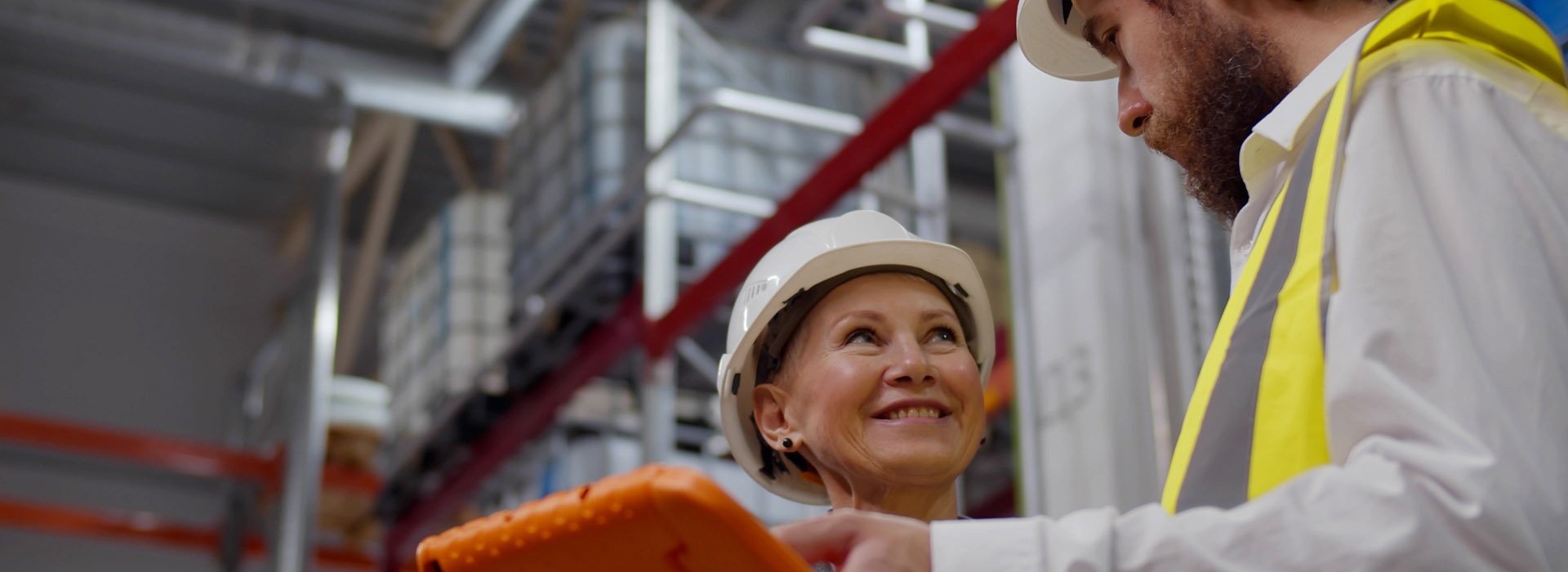Lotte Kaster: Improving and saving lives
With a background in engineering, Lotte’s awareness and passion for safety flourished after working in the wind turbine industry. Now in a global health and safety role in the manufacturing industry, she reflects on safety progress, how communication can be a simple safety win and why reinforcement is vital.


Lotte Kaster
Vice President Global QHSE&E at Velux A/S
Q.
How do you think the perception of safety has changed, and are there any simple changes to achieve safety excellence?
The maturity of the safety culture is, in my opinion, the key factor. If a company sets its safety culture too rigidly they will never succeed in maturing the safety culture. This is as the safety procedures will always be perceived as something that HSE employees developed without any real explanation of what the benefits are to the workforce. Responsibilities will become too siloed, which mean that the safety agenda will ultimately lack coordination. Is the Safety Culture changing? Yes, for the companies where top management are taking a visible responsibility for zero accidents. But it’s still important to keep holding up a mirror on the levels of engagement and safety maturity at top management level. I think we can also get too caught up in losing sight of the safety vision, so involving third parties can act as a catalyst to achieve safety excellence by bringing fresh eyes and offering a different perspective. There are also simple changes that can impact safety perception; by being visible and addressing the culture by speaking to people. This not only creates awareness, but also shows that you genuinely care about their safety.
"What is appealing about working in health and safety is every small step forward is a big step towards improving and saving lives."
– Lotte Kaster, Vice President Global QHSE&E at Velux A/S
Q.
So communication is a key safety tool for you?
I think it’s an essential part of the safety toolbox. But we also need to understand that safety culture is an ongoing activity. It’s not about talking about safety once a year, having one town hall meeting or sending the odd email; it’s about creating a continuous programme of safety awareness. It’s also ensuring that safety material is not static. Information on safety needs to be refreshed to reflect current safety dynamics and be connected to new ways people digest information. Bring safety information to life; let it breathe!
Q.
The arrival of COVID-19 saw the need to adapt production processes to ensure workers’ safety and keep the production wheels turning. What other mechanisms did you introduce?
Ensuring the health and safety of our employees is our highest priority, and we made many changes to the way production teams worked with extra protective measures to keep contact to a minimum.
Working From Home (WFH) has overnight become the new normal and it is enforcing changes on us all. Now that we know much more about the benefits and possibilities of working from home, it is also becoming apparent that there are pitfalls we need to be more concerned about.
We have “only” had around ten months to adapt to the enormous impact COVID 19 has on our ways of working; habits we have created over years, if not decades. No wonder that this challenges our sense of wellbeing and satisfaction. The blurred lines between leisure and work and the strong reduction of permitted activities lead to many home workers putting in longer hours. This eats away at our time for recreation and is also reflected by the fact that people are reporting more inactivity and spending less time outdoors.
It seems the real difficulty lies in doing things we know we ought to do, but just don’t get done. We believe that we can all help each other by voicing the essential factors of wellbeing more by adopting the socalled “voicing culture”. Ask each other frequently about how you are doing in terms of: building and keeping up scheduled work and breaks during the day? Stopping working and putting away the PC when you have decided to be off work? Or fit in more physical activity.
We provided and promoted a tool to gain personal insights on our changed behaviours. Encouraging our employees to have shorter meetings, to book focus time, or not to send e-mail outside normal working hours.
Q.
How else has technology been employed to improve safety?
We often associate technology with substantial changes, but that’s not always the case. You can be inventive. We improved hazard and near miss reporting by developing a tool that is easily accessible through a workspace APP using an iOS device (tablets/phones) and where pictures are easily uploaded. It’s about the smart use of technology that’s exciting. So the use of power apps to collect and analyse data on the front line using technology we already have. Data is another tool we often underutilise. We have the technology to gather vast amounts of data, but we haven’t explored the potential to dig deeper to analyse data sets and look for less obvious patterns that can improve safety. Of course, the increased use of technology requires us to re-skill the workforce, particularly as we increase the use of robotics to optimise production. These developments add another layer to health and safety that we need to understand better so we can adapt health and safety programmes accordingly.
"We believe that we can all help each other by voicing the essential factors of wellbeing more by adopting the so-called ‘voicing culture’."
– Lotte Kaster, Vice President Global QHSE&E at Velux A/S
Q.
What are the key elements you would use to push safety from good to great?
First of all, I think that we have to move away from a focus on compliance alone. We have rules and standards, but we also need to factor in motivation and commitment to personal safety as core values. It’s also important that we clearly define the governance structure around safety; this includes leadership commitment and visibility as well as better employee engagement. By clearly defining our roles and responsibilities, we can strengthen safety training to identify new risks emerging and, importantly, help employees spot those risks. This is all part of developing a more mature safety culture. The more you anchor this safety culture within the company, the more it becomes a business value. At the same time, we need to develop a safety roadmap that reflects the continually changing world impacting us. We need agility as, by the time we reach the end of one safety programme, the environment will have evolved. There’s also the human factor to consider. I don’t think that we will ever achieve sustainable safety results if we don’t consider the human element within changing or maturing a safety culture. We need to be aware of what stage people are in the change process and be able to act accordingly. People might have the awareness of the need to change, they might also have the desire to participate in the change, but do they know how to change and do they have the ability to implement changes?
Finally, if we are going to push safety to a higher level, we need to reinforce safety learnings constantly. These can be small reinforcements drip-fed to maintain awareness, but we should also think outside of the box to look at new and inventive ways to reinforce the right safety actions. Ultimately, what is appealing about working in health and safety is every small step forward is a big step towards improving and saving lives. This is something all professionals in health and safety can be proud of.
"Safety culture is an ongoing activity. It’s not about talking about safety once a year, having one town hall meeting or sending the odd email."
– Lotte Kaster, Vice President Global QHSE&E at Velux A/S